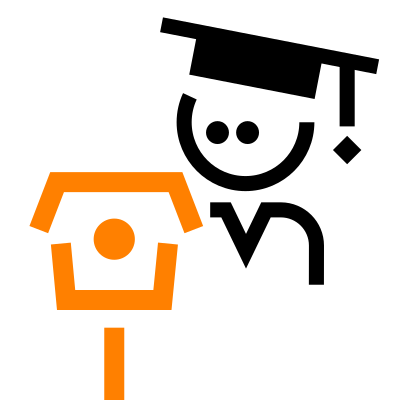Choosing the most appropriate IoT protocol for your project can be difficult. There’s so much choice out there, and each protocol has its own strengths and weaknesses.
We’re here to help you choose the right IoT protocol for your system by analyzing three of the top protocols available to developers:
- WebSocket
- MQTT
- CoAP
We’ll compare WebSocket and MQTT, look at the key differences between CoAP and MQTT, and then suggest ways to solve the limitations of each. So, WebSocket vs. MQTT? CoAP vs. MQTT? Which will come out on top?
For a more thorough deep dive, check out our Comparison of IoT Protocols for Developers.
What is WebSocket?
WebSocket is a computer communication protocol. It is reliable, though it consumes a lot of power. In exchange, the protocol delivers real-time performance and bi-directional communication between a client and the server over a single TCP connection. IoT systems rely on WebSocket in situations where constant communication between a server and a client, plus audio and video support, are necessary.
What is MQTT?
Message Queue Telemetry Transmission (MQTT) is an internet-based IoT protocol that uses the publish/subscribe format. A publish/subscribe model means everything published by a particular system is received by a list of subscribers, which in an IoT system would be various IoT apps.
MQTT is lightweight, but because of its low power consumption, messages don’t always have enough power to push through to the destination as fast as they would for a higher-powered protocol. This latency means delays and inefficiencies may occur.
Still, the MQTT protocol is extremely reliable in terms of making sure the messages do eventually arrive. MQTT guarantees delivery in most cases through a type of prioritization called a Quality of Service (QoS) system.
The QoS stipulates three different levels of priority:
- QoS 0, which is somewhat confusingly also called “at most once delivery.” At most once delivery means the message can’t be delivered more than once, even if it loses some information on the way. QoS 0 works great when the quality doesn’t need to be all that high. It requires very little power and is good for low-energy IoT environments. In the case of QoS 0, though, there may be some data loss and reliability is not absolute.
- QoS 1, aka “at least once delivery” guarantees the delivery of a message in full at least once. If there was data loss the first time the message got delivered, the system can duplicate the message to ensure all parts are received.
- QoS 2 is also known as “exactly once delivery.” QoS 2 guarantees delivery of a message without data loss just like QoS 1, but instead of duplicating the message, it simply uses more power to ensure a higher-quality delivery at the outset.
Using this priority system, MQTT becomes reliable when it needs to be and less so when low power consumption is the most important factor.
What is CoAP?
The Constrained Application Protocol (CoAP) is a REST-based IoT protocol similar to the HyperText Transfer Protocol (HTTP), but requires less energy and computing power. CoAP is easy to secure through Datagram Transport Layer Security (DTLS), which provides strong encryption and is the CoAP equivalent to Transport Layer Security (TLS) for HTTP. CoAP is one of the most common protocols used for building automation and smart energy IoT systems.
Similar to MQTT, CoAP has a designation for different types of messages.
- 0 : Confirmable – This type of request indicates that an acknowledgment, i.e. a confirmation, is required.
- 1 : Non-confirmable – In this case, no acknowledgment is required.
- 2 : Acknowledgement – An acknowledgment response confirms that a message has been received and processed.
- 3 : Reset – This indicates that a message has been received but could not be processed.
Of course, the highest level of reliability exists when a request gets acknowledged.
MQTT vs WebSocket
Let’s discuss the differences between WebSocket vs. MQTT. They are both IoT protocols, but that’s where the similarities stop.
MQTT uses the publish/subscribe network protocol, which is used to transport messages between devices directly in the web browser. It’s extremely lightweight and is, therefore, most suitable for smaller, constrained devices. Otherwise, you could have issues with latency. MQTT also does not natively support video streaming.
On the other hand, WebSocket is a computer communication protocol. It creates a two-way channel between a web browser and a server. Furthermore, it runs over a single TCP connection. WebSocket is much more heavyweight than MQTT, but still less so than HTTP. But while WebSocket may require more computing power, it generally doesn’t suffer from latency issues and can support video and audio streaming.
MQTT vs. WebSocket: Which One is Better Suited as an IoT Protocol?
From an IoT perspective, MQTT is arguably the better option of the two.
This is because WebSocket isn’t well suited to low-power environments. It was initially designed as a reliable two-way communication channel between browsers and servers. So, while it can be used for connected embedded devices, it will not be able to hold signals as well without high energy usage.
On the other hand, MQTT was specifically designed for IoT devices. It can present certain problems to developers since it doesn’t work for video streaming and doesn’t have a verification system for message delivery. But despite its latency issues, MQTT is good at minimizing bandwidth and ensuring generally reliable messaging.
MQTT and Websocket Comparison Table
Here’s a comparison between the two protocols, at a glance:
MQTT | Websocket |
Subscribe model and used in small devices | Mainly works in an environment that supports pub/sub-architectures |
Minimal overhead | A lot of overhead |
Issues with latency | Low latency |
RA2 | Low-level protocol |
Works on top of TCP/IP protocol | Point-to-point communication |
Works on top of TCP/IP protocol | Messages can't be sent as a priority |
CoAP vs. MQTT
While we’ve established that MQTT is generally a better option for your IoT stack than WebSocket, let’s see how it compares alongside CoAP (Constrained Application Protocol).
CoAP | MQTT | |
Communication kind | Publish-subscribe model | |
Protocol type | P2P/one-to-one communication protocol | Many-to-many protocol |
Messaging mode | Asynchronous and Synchronous | Only Asynchronous |
Transport layer protocol | UDP | TCP/IP |
RESTful-based | ||
Message labeling |
While some of the technical specs differ, the two protocols also share plenty of similarities:
- They’re both open IoT standards
- They’re both better suited to constrained environments than HTTP
- They provide mechanisms for asynchronous communication, so requests aren’t received at the exact same time as they are sent, unlike with real-time communication
- They both run on IP; in other words, they are internet-based protocols
- And they both have a range of implementations
CoAP vs. MQTT for IoT
This really depends on what you’re after. There are pros and cons of MQTT and pros and cons of CoAP.
MQTT is well-suited if you’re looking for a protocol that’s lightweight and battery friendly. However, steer clear if you’re concerned about latency issues or you’re looking for an IoT protocol that’s developer-friendly and supports real-time interaction. MQTT also requires you to build your own security layer.
CoAP is a good option if you’d like RESTful programming and HTTP+TLS/SSL is too big of a protocol for your device. And while security options for CoAP are limited out of the box, you can easily solve this by using CoAP with DTLS. That being said, if you’re looking for a maximum reduction in energy use and extreme message reliability, you should opt for a non-CoAP protocol.
Read more information on the benefits of a CoAp and Nabto integration and how it works
The Bottom Line
So, between WebSocket vs. MQTT vs. CoAP, which IoT protocol is the best for your project? Well, for IoT you’d be wise to avoid WebSocket. It doesn’t hold signals well and is ill-suited to the world of IoT.
That leaves MQTT and CoAP. While MQTT is lightweight and battery friendly, it has issues with latency. Whereas CoAP is usually held back by its message reliability. Still, with just a few lines of code, you can install Nabto Edge on top of CoAP or a similar protocol and solve that limitation.
An IoT communication protocol is absolutely necessary for an IoT system to function. However, if one of the devices using CoAP or a similar protocol is placed behind a firewall, communication between the devices breaks down. That is where Nabto can provide an answer by establishing an encrypted connection between devices and, say, your personal smartphone, even through a firewall. By relying on a secure, encrypted connection like the one Nabto provides, you can have full assurance that you’re doing your best to protect your IoT system from outside threats without sacrificing speed and efficiency.
If you want to learn more about Nabto Edge – or any of our other IoT solutions – get in touch with us today.
Read Our Other Resources
We’ve published a range of IoT resources for our community, including:
- A Comparison of IoT Protocols for Developers, which provides a complete comparison of the major protocols and standards available.
- Buying versus building an IoT platform, which discusses how to choose the best option for you.
- Our guide on how to Develop IoT Apps and what platforms you can use.
- What is MQTT in IoT and Should You Use It?, which provides an overview of MQTT in IoT.










